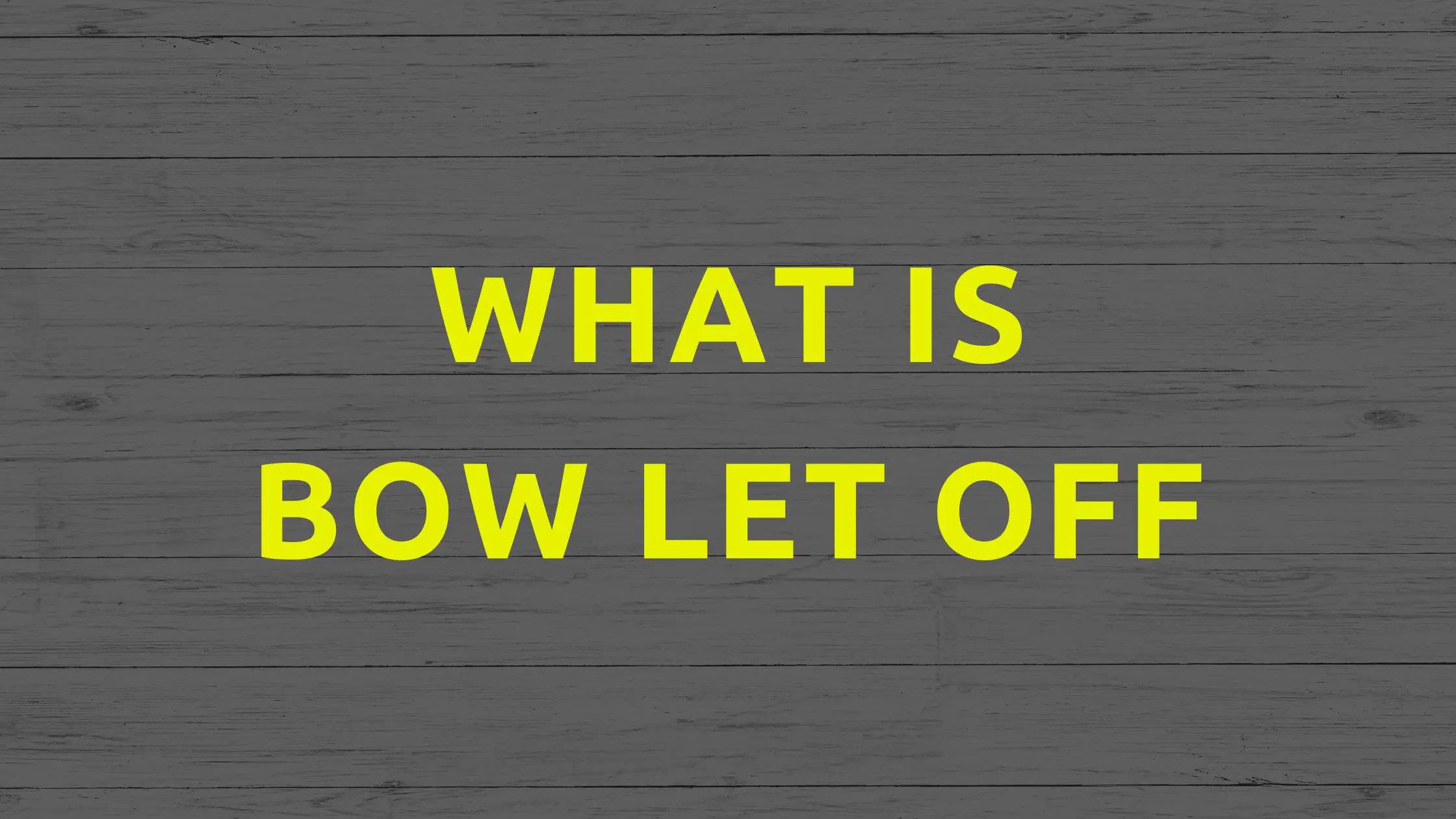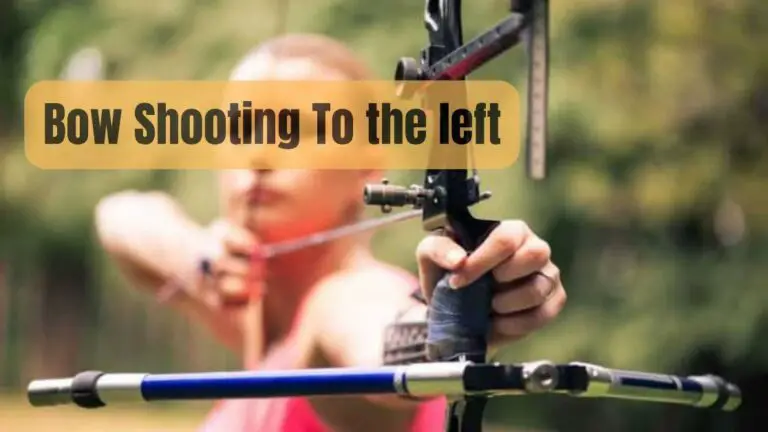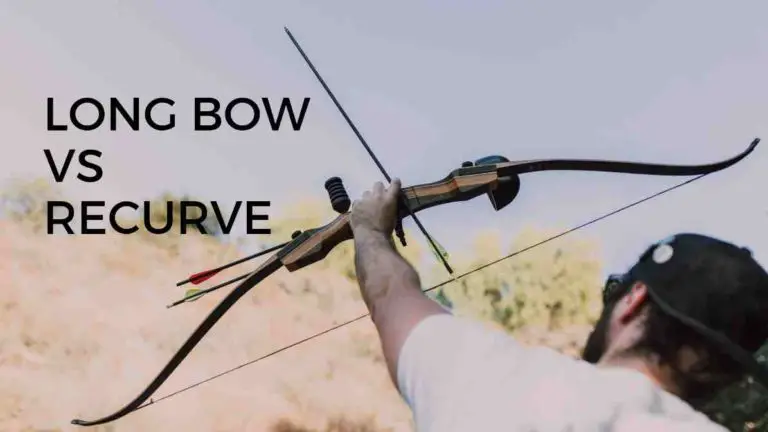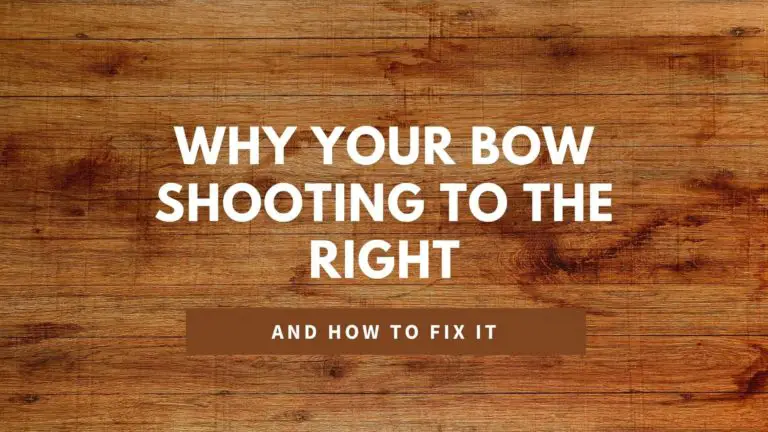What is Bow Let Off? How Does It Work? [2024 Update]
One of the most essential characteristics of a compound bow is letting off. With high accuracy, compound archers may utilize considerably greater draw weights. Bow Let off will be the subject of this post, which will discuss how it came to be.
What is bow let off?
Bow let-off refers to the reduction in draw weight that occurs when you reach full draw on a compound bow. It allows you to hold the bow at full draw with less effort, making it easier to aim and shoot accurately. The amount of let-off is usually expressed as a percentage and higher let-off percentages mean less effort is required to hold the bow at full draw.
A compound bow’s let-off is the amount of power the archer transfers to the bowstring. This determines how fast the bow will release the arrow. The higher the let-off, the more power is transferred to the arrow and the faster it will travel.
What is let off on a compound bow?
Let-off on a compound bow refers to the reduction in draw weight that happens when you reach full draw. It means you need to hold less weight when fully drawn, making it easier to aim and shoot accurately.
What determines the let-off on a compound bow?
The draw weight of a fully drawn complex bow is held by the archer in percentage terms. With a full draw, a higher let-off allows you to aim comfortably even if you’re using a high draw weight because it means you hold less weight.
Let’s say you have a 70-pound draw weight on your compound bow, and it’s let off 75%. You’ll pull 70 pounds when you draw the bow all the way to full draw, which is what this means. You’ll only hold 17.5 pounds at full draw since 75% of the 70 pounds have been reduced. This is a significant amount of money.
What is the maximum let-off percentage of a compound bow?
Between 60% and 90% of the bow’s power will be let off. This is merely a guideline, and it differs depending on the model. Some bows have a variable let-off percentage, which is a useful feature.
So, how does let-off work on a compound bow, huh? Let’s start by discussing the complicated processes that go into achieving it.
Does let off affect arrow speed?
Yes, let-off does affect arrow speed. When a bow has a higher let-off percentage, it means you need to hold less weight at full draw, which can result in increased arrow speed. However, the effect may not be significant, and other factors like bow design and arrow weight also play a role in determining arrow speed.
How does let off work?
The mechanics of the bow are what are causing the let-off, so this may be a difficult thing to explain. As much as possible, I’ll try to use simple language and intuition.
The elliptical form of the cams, which allows more string to be pulled and the limbs of the bow to be drawn closer, is how let-off really functions. As a result, the archer feels less weight since this gives them a mechanical advantage.
As the archer approaches the rear wall, the cam shape is meant to allow just enough string to be drawn. At that moment, the cams spin faster. The real magic here is the limbs coming together. This allows the archer to put more weight on their limbs instead of their torso.
The archer feels little weight at first, but after a short period of time, he or she reaches maximum weight. The weight curve shifts and begins to decrease as soon as it reaches full draw, eventually reaching let-off. The poundage increases again (this is known as “the wall”) if the archer attempts to pull the bow beyond this point.
Watch this Youtube video, if you’re interested in the physics of the theme, I suggest watching it.
How does let-off affect the speed of an arrow?
Let-off has no effect on your arrow’s speed when it is drawn completely, but it does alter the draw weight behavior. For any let-off percentage, the forces that propel the arrow along its journey until it exits the bow are almost similar.
The fact that most compound bows now employ hard cams is the primary reason for this. Unlike soft cams, these don’t speed up the arrow gradually.
As a result, the let-off percentage has only a limited effect on the arrow’s path near the rear wall on most bows. The variation in pace is typically less than 3 fps, which is insignificant.
What is the best bow let off in a compound bow?
My initial reaction was, “Why shouldn’t I acquire a bow with a let-off as high as feasible?” when I first heard about it. Isn’t it a bad thing to have a lot of weight on your hands?
Still, a high let-off has a number of negative effects that you must think about, such as whether your shot is clean and if you have the ability to use your posterior muscles.
Bowhunters seem to prefer a higher let-off of around 75%, whereas target archers seem to prefer a lower let-off of around 65%. Holding the drawn bow becomes easier, but shooting clean shots gets more difficult.
Advantages
Let’s talk about how a high let-off bow benefits you:
- Holding it tight enough to keep it from falling is easier. You may keep your bow steady for longer and concentrate on aiming without being drawn away by a greater let-off. This may help you hit your target more often.
- The extra time at full draw can be critical for bowhunters, who may have to wait for long periods of time for a target to move or change positions themselves.
- It’s easier to shoot for a longer length of time. You may have longer training sessions without getting tired because you do not need to hold as much weight.
Disadvantages
Using a high let-off bow, on the other hand, has some drawbacks:
- It’s tougher to get a clean shot. You’ll need to apply less force to keep the bow at the full draw if you have a high let-off. As a result, any little force you apply to the arrow by mistake will have a significant impact on its course and orientation.
- High let-off bows are indeed more difficult to fire, which is a well-known fact.
- It’s more difficult to keep back tension under control. This is one of the most essential aspects of a good archery technique, and achieving it with a higher let-off is much more difficult. Having less weight at full draw will make keeping your form much harder because you’ll need more force to engage your muscles.
- The quantity of let-offs you are permitted on your bow is limited in certain nations and states. This is a minor technicality that you should consider if you reside in one of these states. Before purchasing your equipment, check with the authorities in your area.
There is no one magic number that every archer will prefer to utilize. Every archer should consider the pros and cons, and based on their needs, they should make a decision.
Conclusion
As you can see in the above section, let off is one of those decisions that seems simple but isn’t. The right amount for you depends on how much power and speed you need. Do you prefer a stiffer or softer draw?
I’ve explained what let-off is, how it functions, and how to determine the best amount for you in this article.
There are so many questions and it really does depend on personal preference. Visit our site for more helpful information. Hope this guide helped! Did we miss anything in our guide? Let us know in the comments section below!






